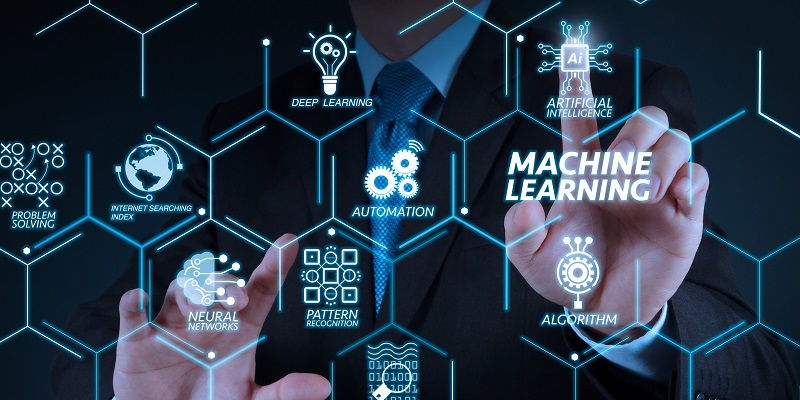At its core, banking is all about data. From tracking transactions and monitoring market trends to assessing risks and predicting customer behavior, data plays a pivotal role in driving financial institutions forward. As technology continues to advance, machine learning (ML) and artificial intelligence (AI) are revolutionizing the banking industry, harnessing the power of data to achieve remarkable results.
Machine learning and AI: Their role in transforming the banking industry
Enter machine learning and AI. These cutting-edge technologies enable banks to leverage vast amounts of data and extract valuable insights to improve operations, enhance customer experiences, and drive growth. By utilizing algorithms, ML and AI systems can learn, adapt, and make autonomous decisions without explicit human programming, thereby offering unprecedented possibilities for banks to thrive in the digital era.
Efficiency: How automating routine processes saves time and resources
One of the key benefits of machine learning in banking lies in its ability to automate routine processes. By employing ML algorithms, banks can significantly reduce manual efforts and save thousands of man-hours. Tasks such as data entry, verification, and reconciliation can be seamlessly performed by machines, allowing bank employees to focus on more strategic and value-added activities.
Accuracy: The ability of machines to analyze data without human biases
Machines are known for their impeccable accuracy, which is particularly crucial in the banking sector. Unlike humans, who may be influenced by biases and subjective judgments, machine learning algorithms analyze data objectively. This results in reduced errors and improved decision-making, enabling banks to make informed choices based on reliable information.
Predictive Power: How machine learning can forecast trends for proactive decision-making
One of the most remarkable aspects of machine learning (ML) in banking is its predictive power. By analyzing historical data, ML models can identify patterns, detect trends, and forecast future outcomes. This empowers bank decision-makers to be proactive in addressing challenges and capitalizing on opportunities. Whether it’s predicting market trends, customer behavior, or credit risk, machine learning enables banks to stay ahead of the curve.
Security: Real-time fraud detection made possible by machine learning
Fraud detection and prevention are critical concerns for banks. With the aid of machine learning’s real-time monitoring capabilities, banks can detect fraudulent activities as they occur. ML algorithms can quickly analyze vast volumes of data, identify suspicious patterns, and raise alerts, allowing banks to take immediate action to safeguard customer interests and maintain trust in the financial ecosystem.
Uncovering subtle patterns: Machine learning’s ability to recognize complex patterns in data
Machines excel at uncovering subtle, complex patterns in data that may be invisible to human analysts. With ML algorithms, banks can unravel valuable insights hidden within massive datasets. These patterns can range from identifying niche customer segments for targeted marketing campaigns to understanding the relationship between economic indicators and investment strategies. Machine learning empowers banks to make data-driven decisions that were once inconceivable.
Personalized financial products: How banks use machine learning to predict customer preferences
Banks nowadays strive to offer personalized financial products and services tailored to individual customer needs. Machine learning algorithms play a vital role in this process. By analyzing a customer’s transaction history, interactions, and economic trends, ML algorithms can predict the financial products they are most likely to be interested in. This enables banks to provide customized recommendations, enhancing customer satisfaction and loyalty.
Improved customer service: Chatbots offer accurate and relevant information over time
Engaging with customers and providing prompt support is crucial in the highly competitive banking industry. ML-powered chatbots have emerged as valuable tools for ensuring top-notch customer service. These chatbots learn and improve with each interaction, offering more accurate and relevant information over time. They can handle inquiries, provide product recommendations, and even assist with financial planning, enhancing the overall customer experience.
Future prospects: The potential for deeper integration of machine learning and AI in banking
The future promises even deeper integration of machine learning and AI in the banking industry. As technology continues to evolve, we can expect banks to leverage these technologies to further streamline operations, enhance risk management, and deliver personalized financial solutions. The possibilities are limitless, and as these technologies mature, they will undoubtedly transform how we perceive and interact with our banks.
There is no doubt that machine learning and AI are reshaping the banking landscape. By leveraging the power of data and automation, banks can achieve greater efficiency, accuracy, and security. Machine learning algorithms uncover valuable insights and predict trends, while chatbots offer personalized customer service. The future holds immense potential for even deeper integration, presenting exciting opportunities for the banking industry to evolve and meet the ever-changing needs of customers in the digital age.

